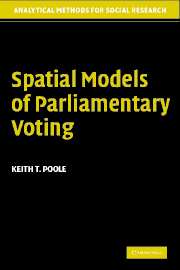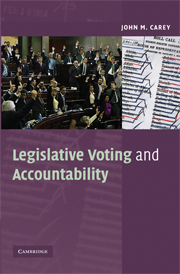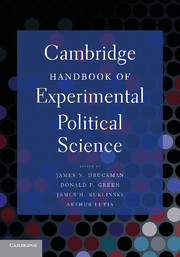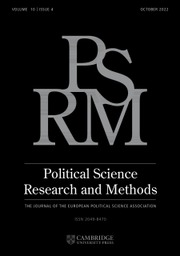Spatial Models of Parliamentary Voting
This book presents a simple geometric model of voting as a tool to analyze parliamentary roll call data. Each legislator is represented by one point and each roll call is represented by two points that correspond to the policy consequences of voting Yea or Nay. On every roll call each legislator votes for the closer outcome point, at least probabilistically. These points form a spatial map that summarizes the roll calls. In this sense a spatial map is much like a road map because it visually depicts the political world of a legislature. The closeness of two legislators on the map shows how similar their voting records are, and the distribution of legislators shows what the dimensions are. These maps can be used to study a wide variety of topics including how political parties evolve over time, the existence of sophisticated voting and how an executive influences legislative outcomes.
- Only book to discuss the analysis of roll call voting in depth
- Clear, concise writing
- Presents complicated topic in an organized manner
Reviews & endorsements
'This book achieves its aim of explaining how to build a spatial model and will be essential reading for those engaged in that, while still being readable and related well to real politics.' Political Studies Review
Product details
April 2005Paperback
9780521617475
248 pages
228 × 152 × 19 mm
0.337kg
62 b/w illus. 8 tables
Available
Table of Contents
- 1. Introduction
- 2. The geometry of parliamentary roll call voting
- 3. The optimal classification method
- 4. Probabilistic spatial models of parliamentary voting
- 5. Practical issues in computing spatial models of parliamentary voting
- 6. Conducting natural experiments with role calls
- 7. Conclusion.






